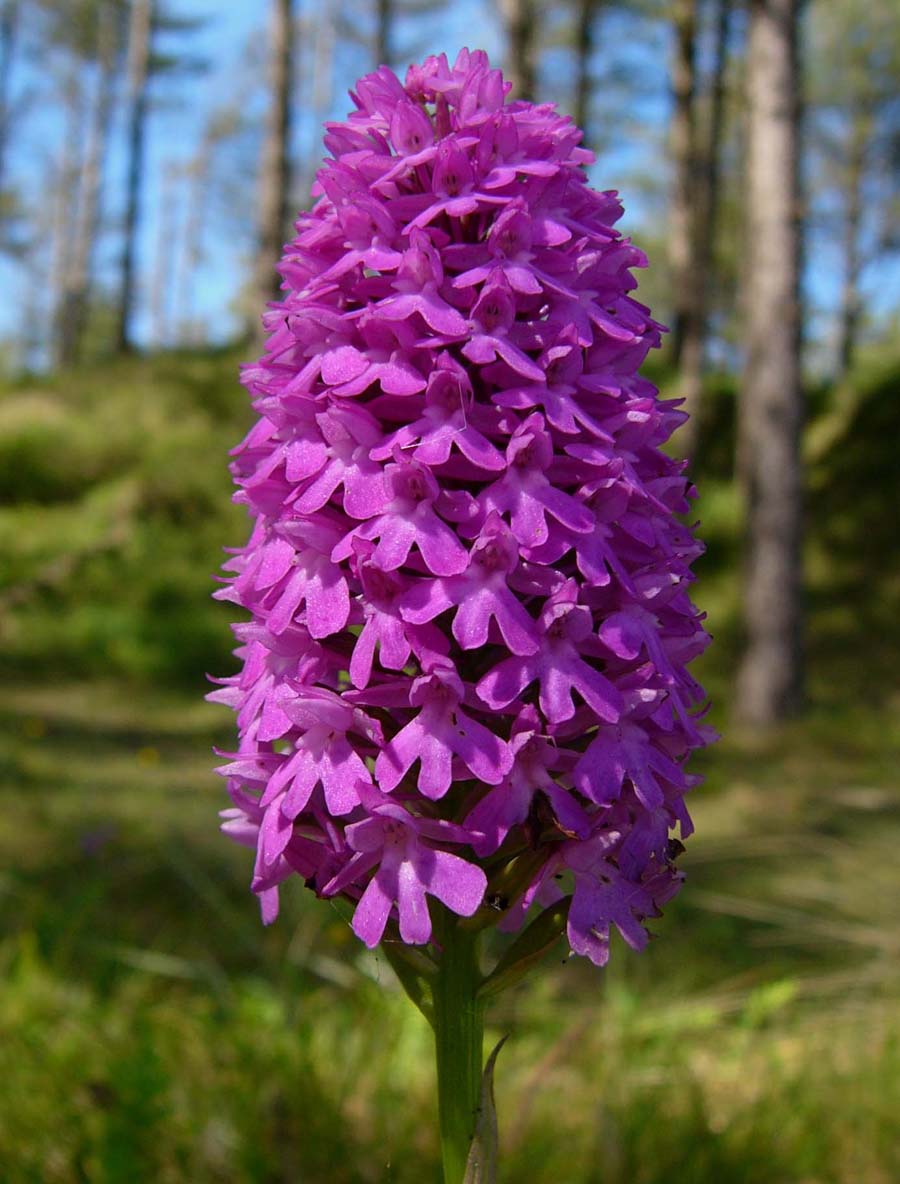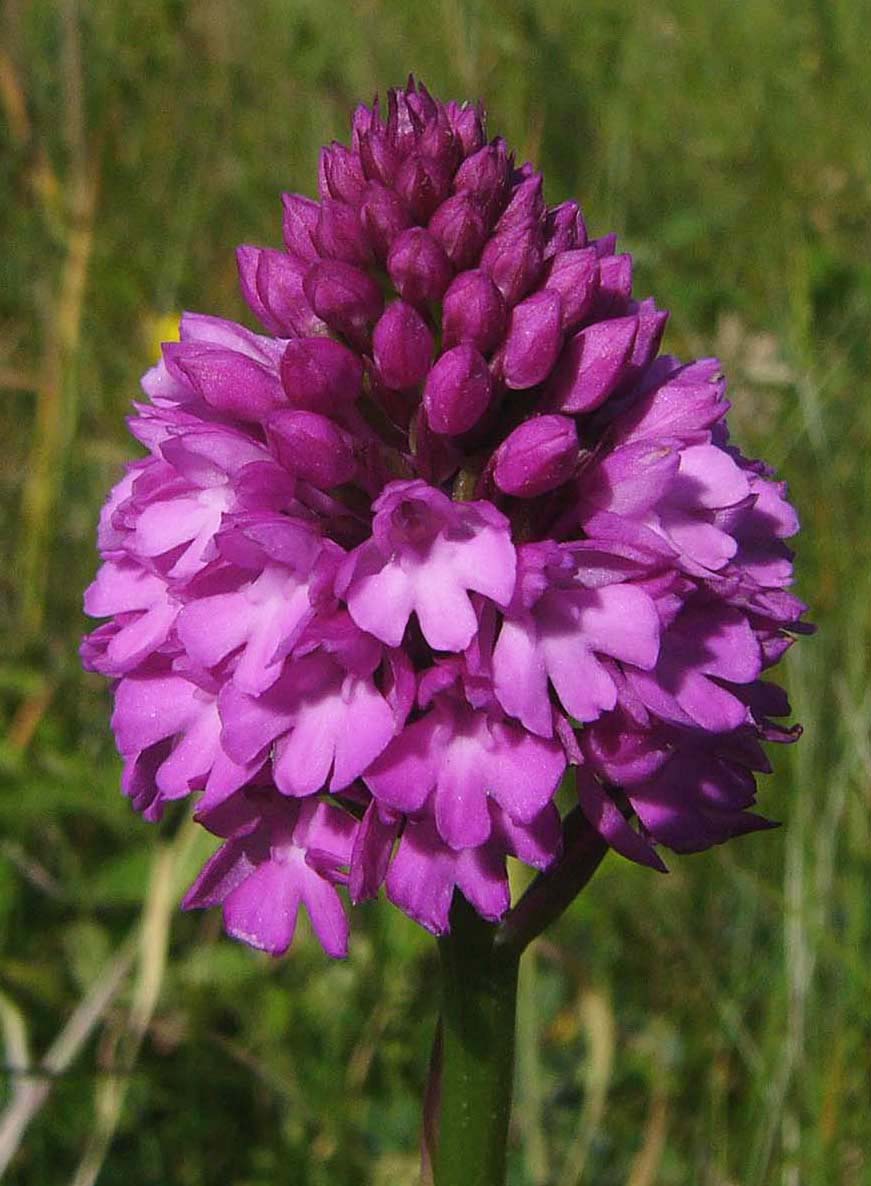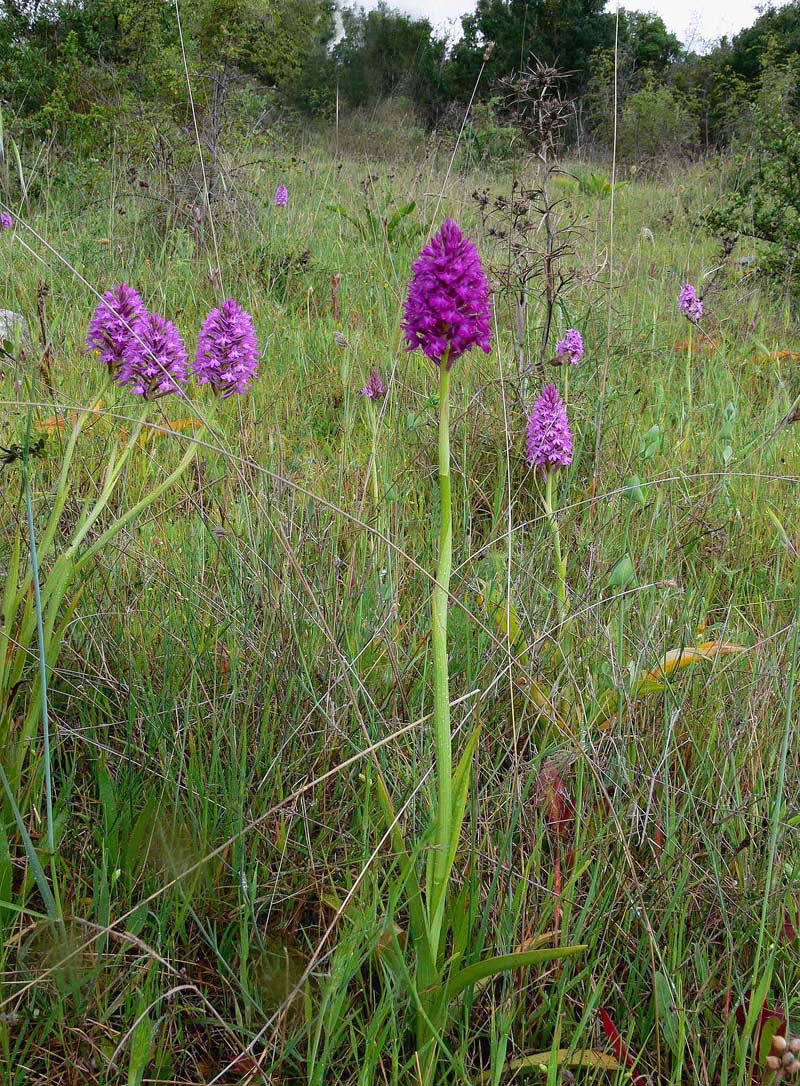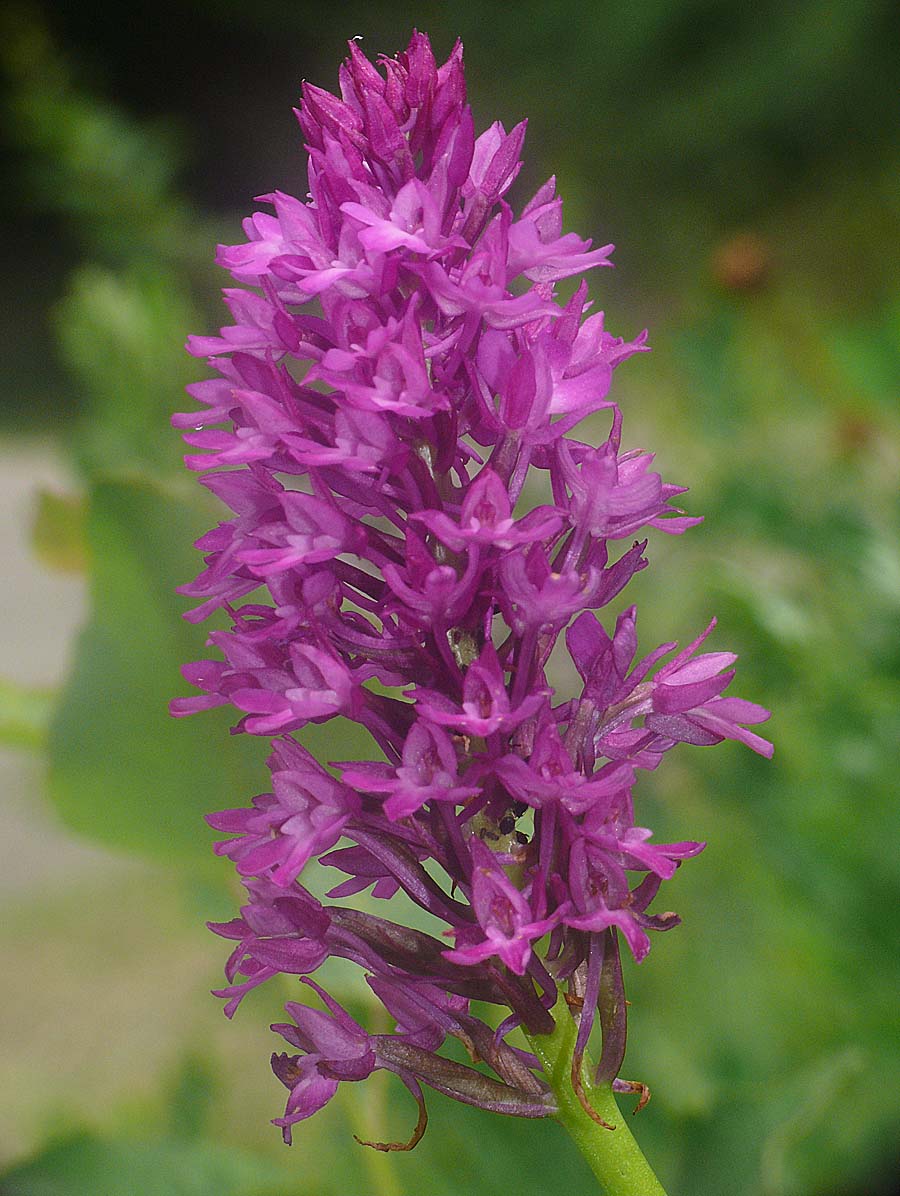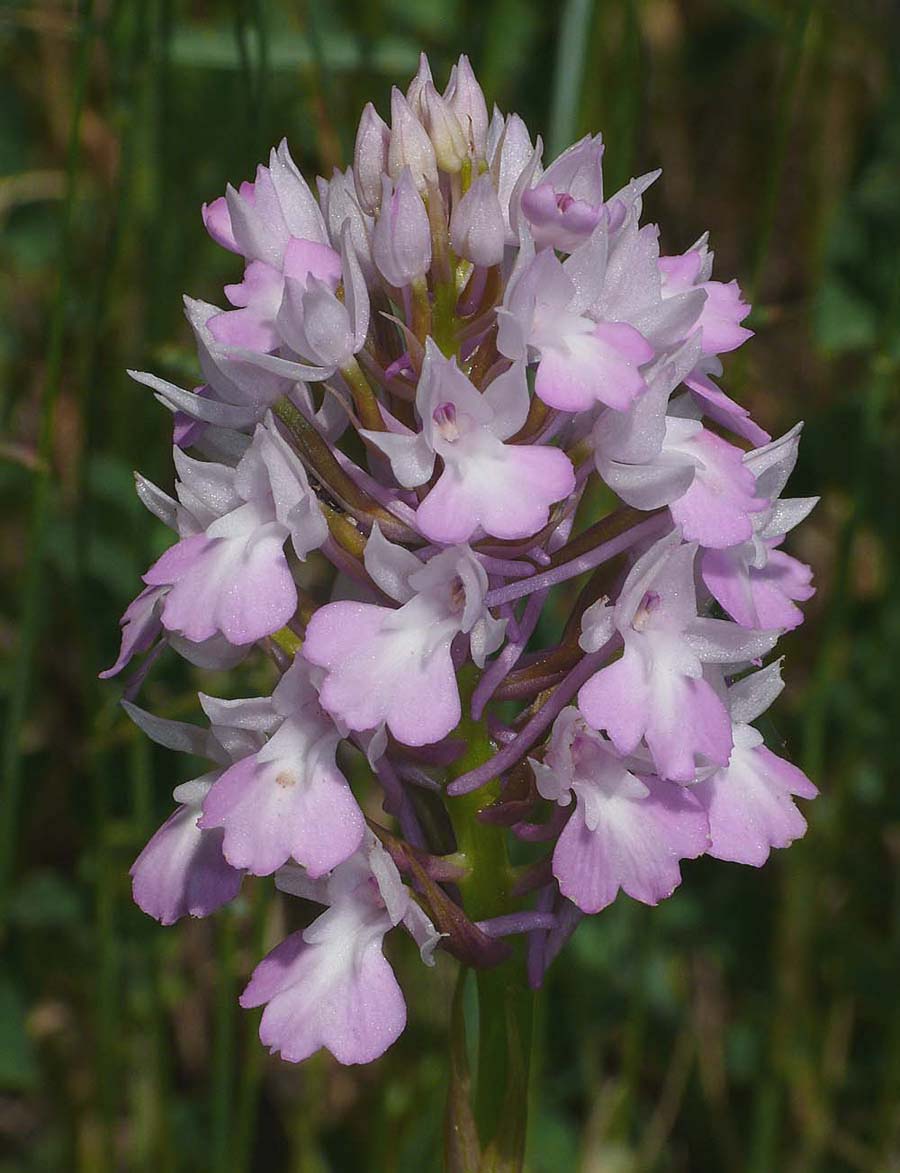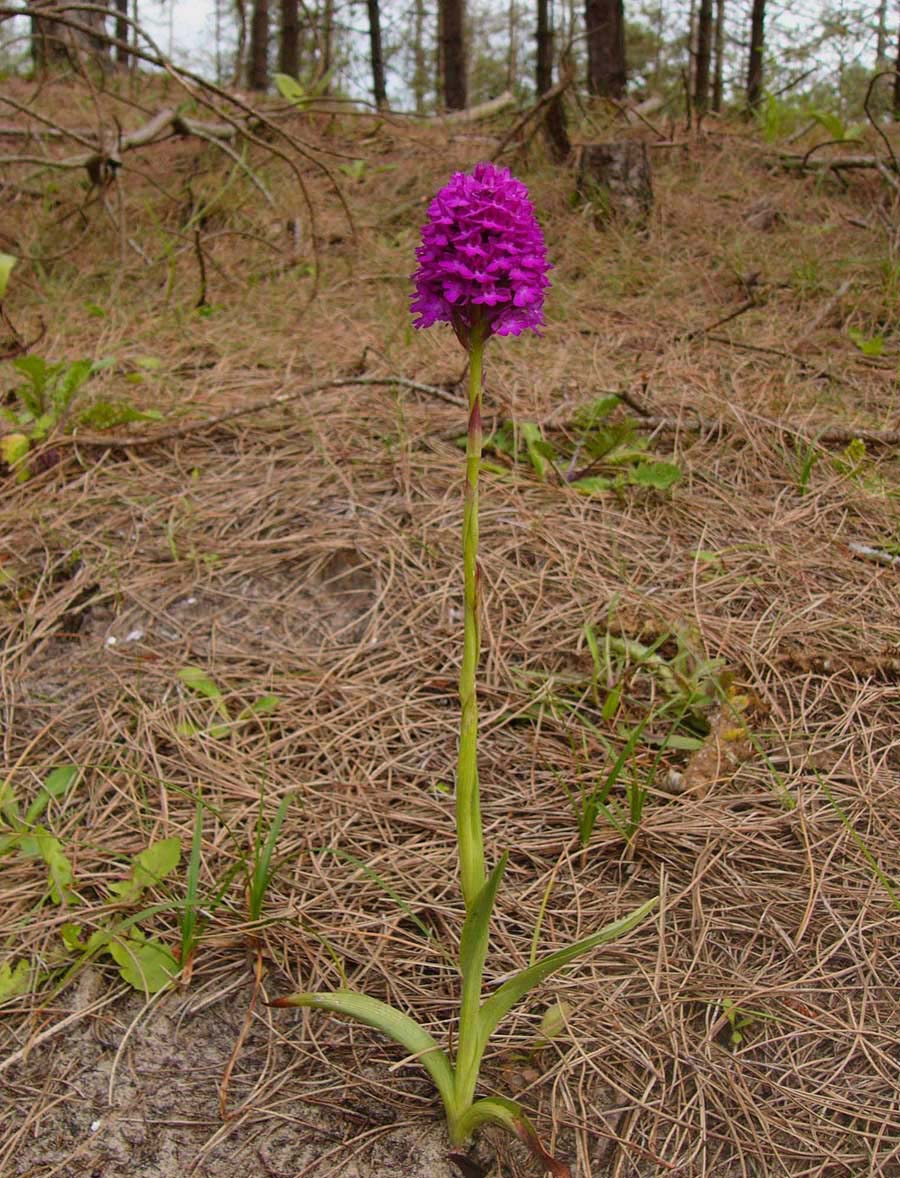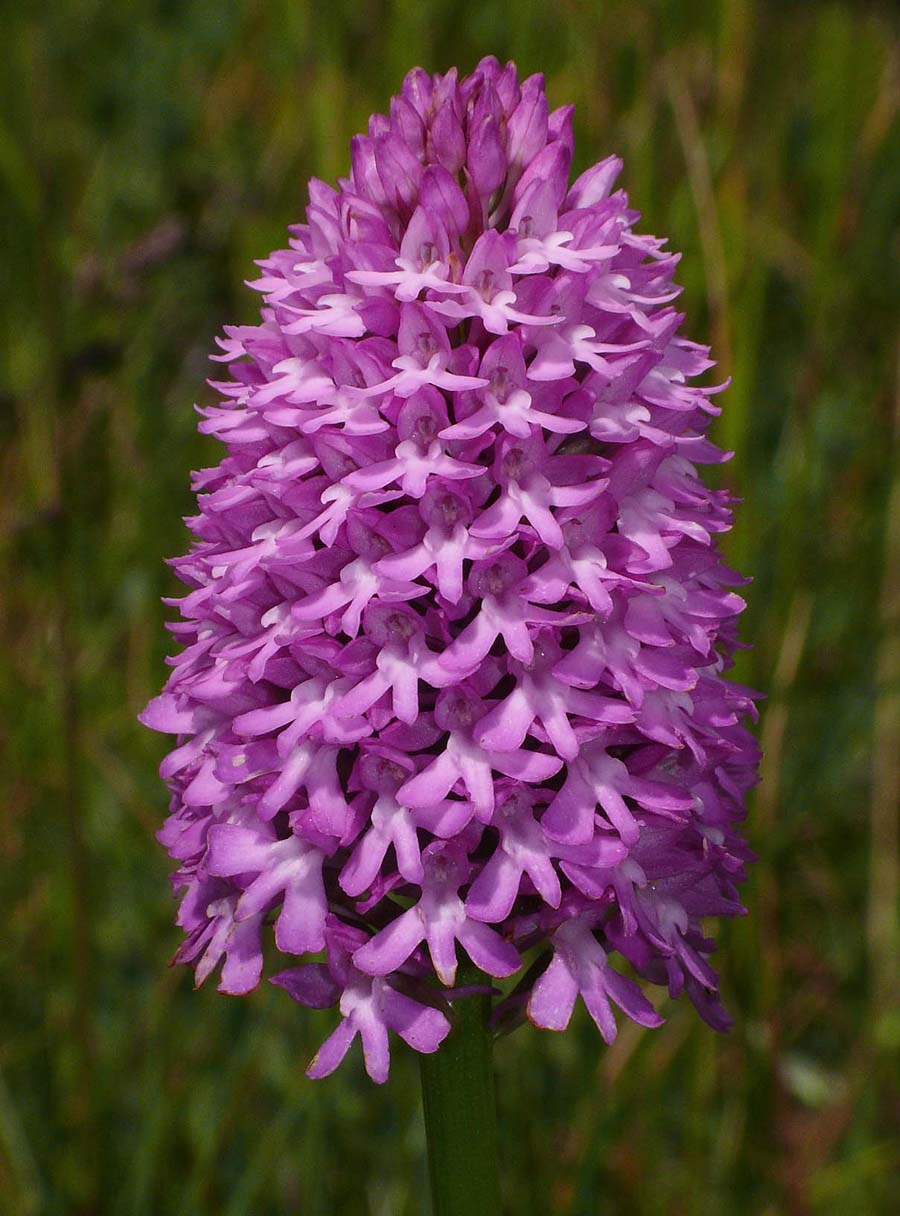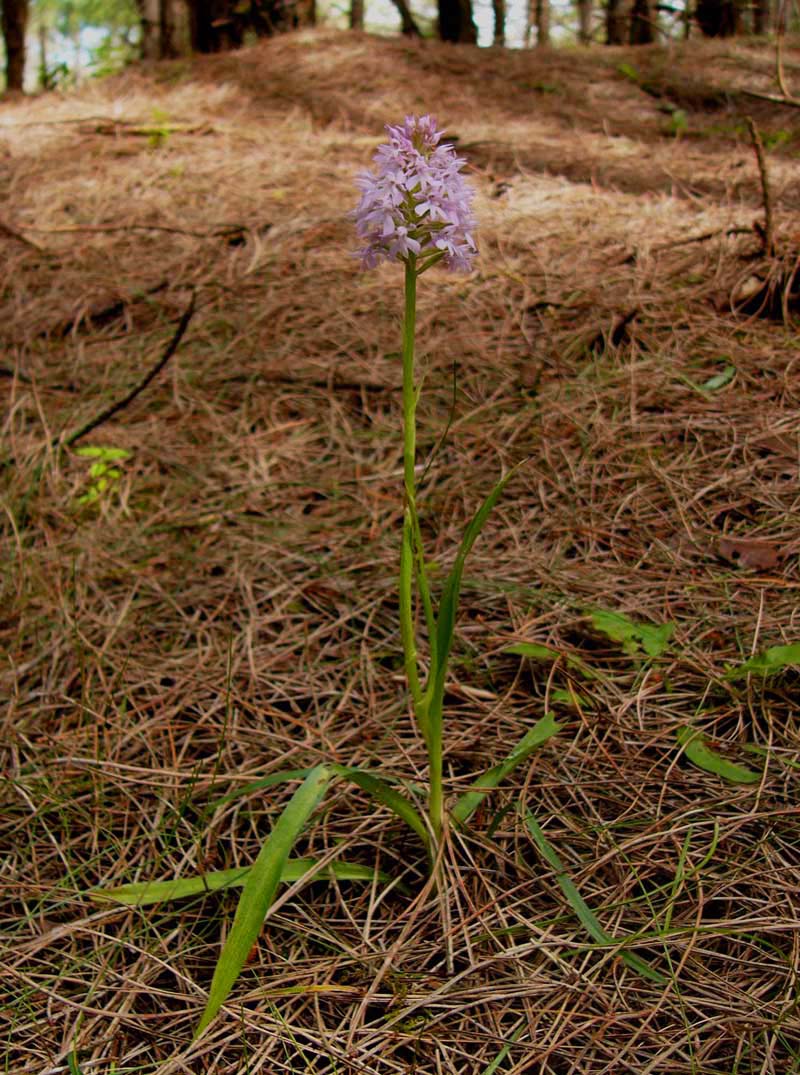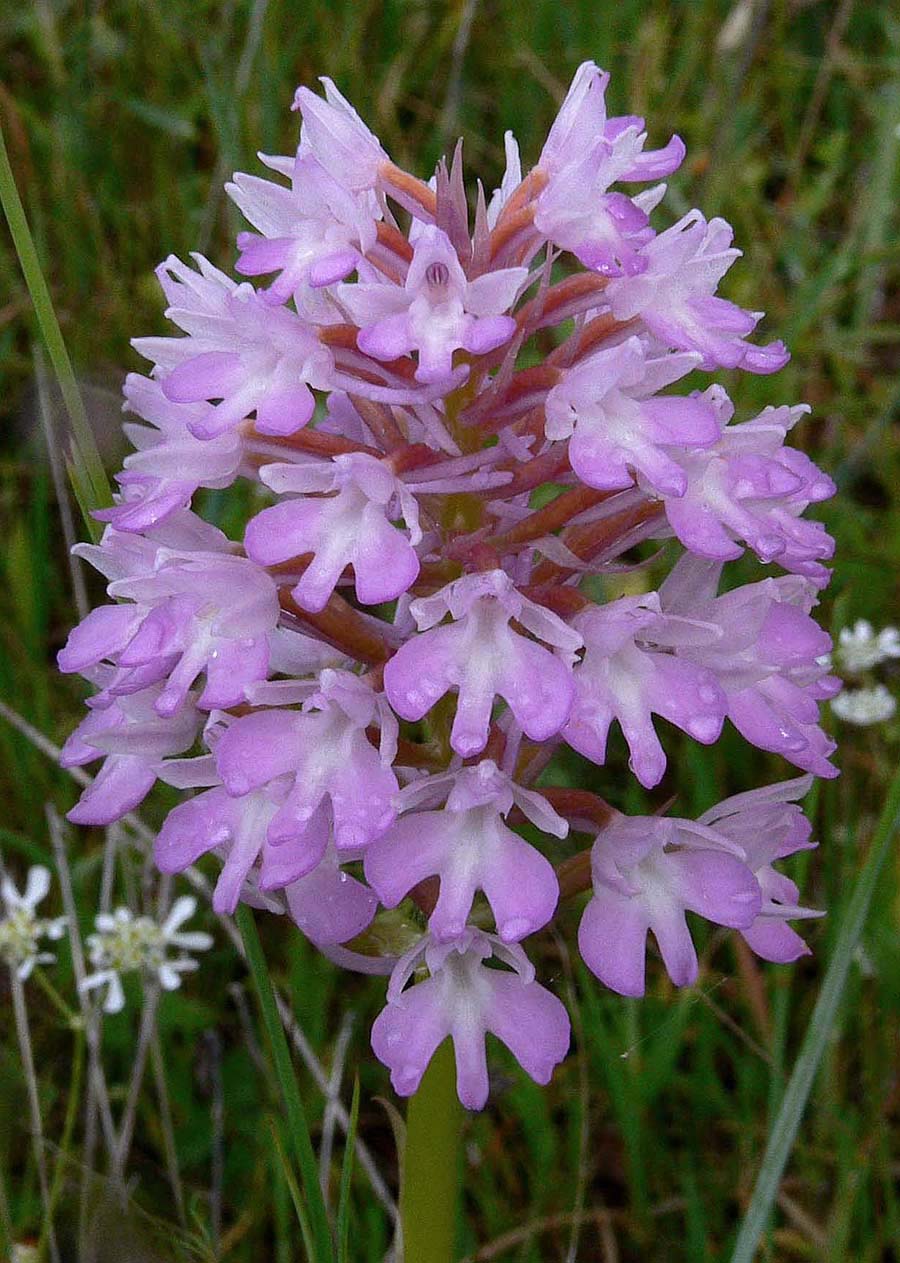A. pyramidalis
was first described by L.C.M Richard from Oxford (Britain)
in 1753 and its name alludes to the pyramidal
shape of the inflorescence. It is widely known by its unsurprising common name, the Pyramidal orchid.
This species is pollinated by a variety of moths and butterflies and the mechanism by which the pollinia attach to the proboscis of insects was first described by no less an authority than Charles Darwin in his paper, The Fertilisation of Orchids. This is a widespread and extremely common orchid, present throughout most of Europe apart from Scandinavia. It is exclusively a plant of calcareous soils but otherwise tolerates a broad range of habitat from dry to damp conditions, in full sun to relatively deep shade.
Although A. pyramidalis is generally an easily recognized species due to its appearance and structure, it can vary considerably in terms of colouration, flower shape and inflorescence density. Hybridization is not unknown but is not at all common and will rarely influence identification. Variants have been described but these seem primarily to be colour morphs and are of little evolutionary significance. Variety tanayensis is however a distinctive and beautiful variety from the Alps with a dense head of deep red flowers. A further variety, nivea from Greece is a pure white form that grows in stable populations isolated from variety pyramidalis. The frequency of pale and white forms of this species increases in the south and east of its range and in such countries as Greece they can be the dominant colour strain (see A. pyramidalis var. urvilleana). An as yet unnamed early flowering subspecies from southern Mallorca is predominantly white or very pale pink and rarely produces the typical mid pink. Picture 5 depicts an unusual plant from the Lecce Province of southern Italy.
This species is pollinated by a variety of moths and butterflies and the mechanism by which the pollinia attach to the proboscis of insects was first described by no less an authority than Charles Darwin in his paper, The Fertilisation of Orchids. This is a widespread and extremely common orchid, present throughout most of Europe apart from Scandinavia. It is exclusively a plant of calcareous soils but otherwise tolerates a broad range of habitat from dry to damp conditions, in full sun to relatively deep shade.
Although A. pyramidalis is generally an easily recognized species due to its appearance and structure, it can vary considerably in terms of colouration, flower shape and inflorescence density. Hybridization is not unknown but is not at all common and will rarely influence identification. Variants have been described but these seem primarily to be colour morphs and are of little evolutionary significance. Variety tanayensis is however a distinctive and beautiful variety from the Alps with a dense head of deep red flowers. A further variety, nivea from Greece is a pure white form that grows in stable populations isolated from variety pyramidalis. The frequency of pale and white forms of this species increases in the south and east of its range and in such countries as Greece they can be the dominant colour strain (see A. pyramidalis var. urvilleana). An as yet unnamed early flowering subspecies from southern Mallorca is predominantly white or very pale pink and rarely produces the typical mid pink. Picture 5 depicts an unusual plant from the Lecce Province of southern Italy.
